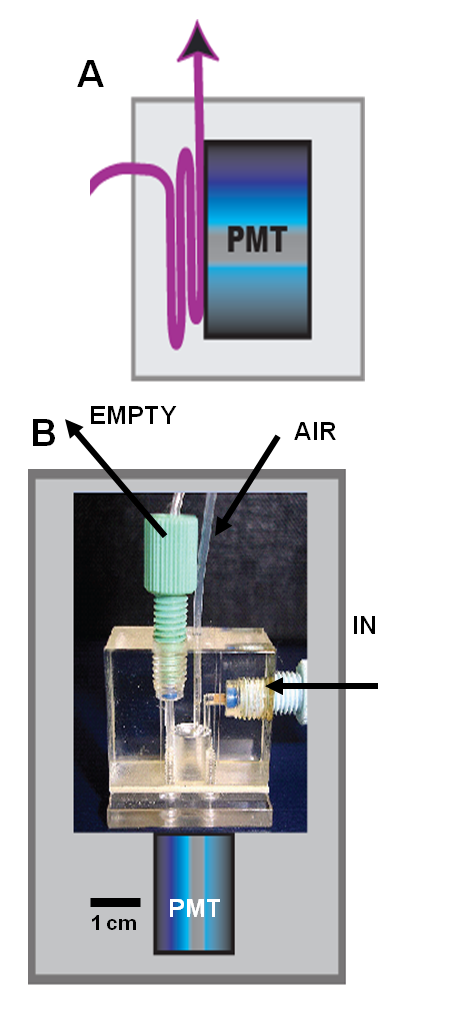There are two approaches to design of flow based chemiluminescence detection: a flow through cell and a batch type cell. Flow through cells are most frequently made of coils of glass or polymer tubing, mounted against a photomultiplier tube window, within a light-tight container (A). In this format the mixing is achieved either by means of a confluence point (in FI mode) or by flow reversal (in SI mode). Alternatives to coil shape configurations have been investigated (Terry 2008). When optimizing detection limits of flow through detectors, the volume and residence time of the light emitting zone must be carefully matched with the volume of the detector and the flow rate, as otherwise not all emitting radiation will be detected. This is difficult to achieve, since the volume of the detector is limited by the size of the PMT window, and the volume of the channel between detector and injector is difficult to minimize due to physical dimensions of the instrumentation.
Batch flow cell (B) (Polasek 2005) eliminates these limitations, since the cell accommodates the entire volume of the light emitting material and allows monitoring upon mixing, and until light emitting ceases.
Flow Design for Chemiluminescence
2.3.12.


This is achieved through an ingenious design of assay protocol, whereby reagents and sample are stacked into the holding coil, separated by air segments and then rapidly transported into the flow cell, where upon mixing with air, light emitting reactions are initiated. At the end of the monitoring cycle the flow cell is emptied by aspiration.
J. M. Terry et al Anal. Chem. 2008, 80, 9817.
Polasek, M., et al., PACIFICHEM 2005. Abstract Viewer, Abstr. No. 678. Honolulu (USA) 15-20 December 2005.









